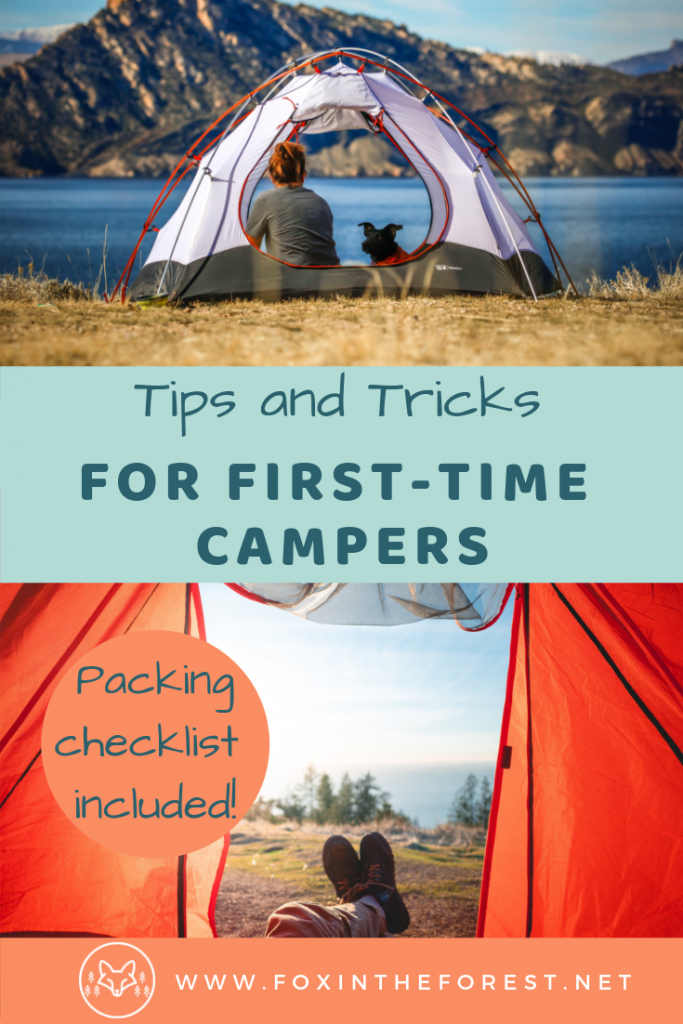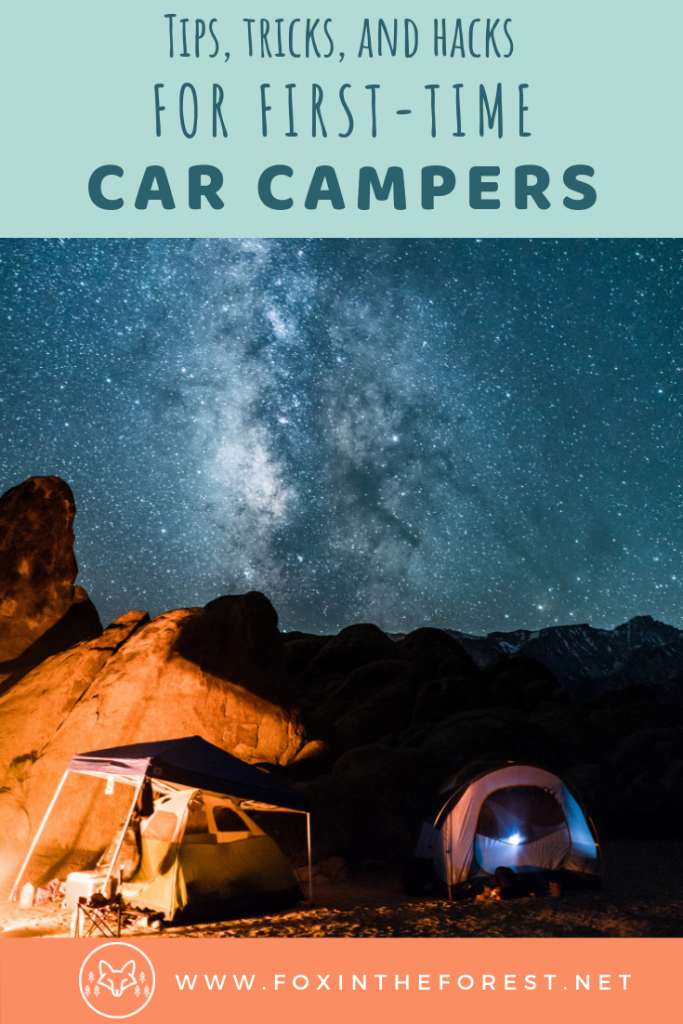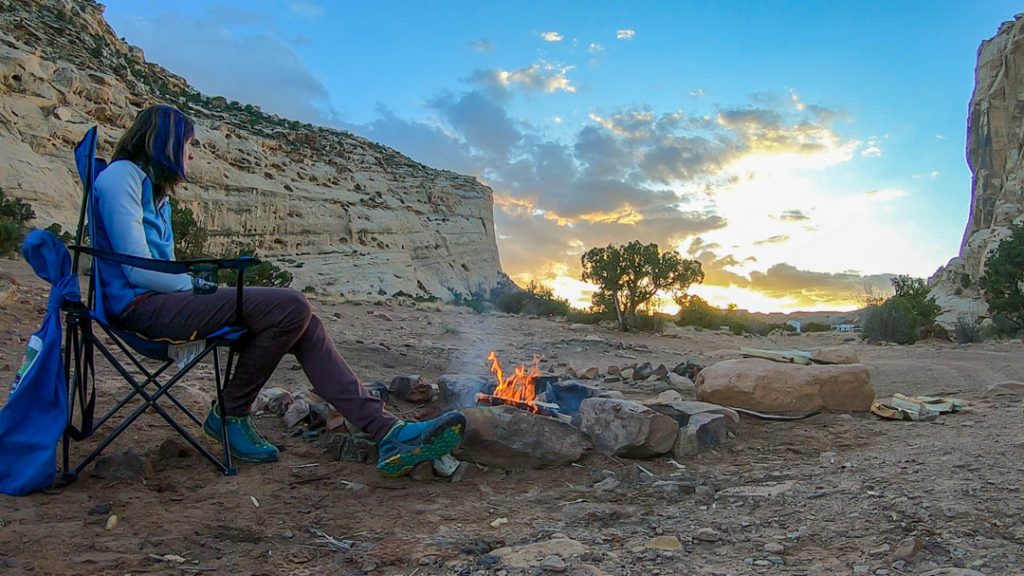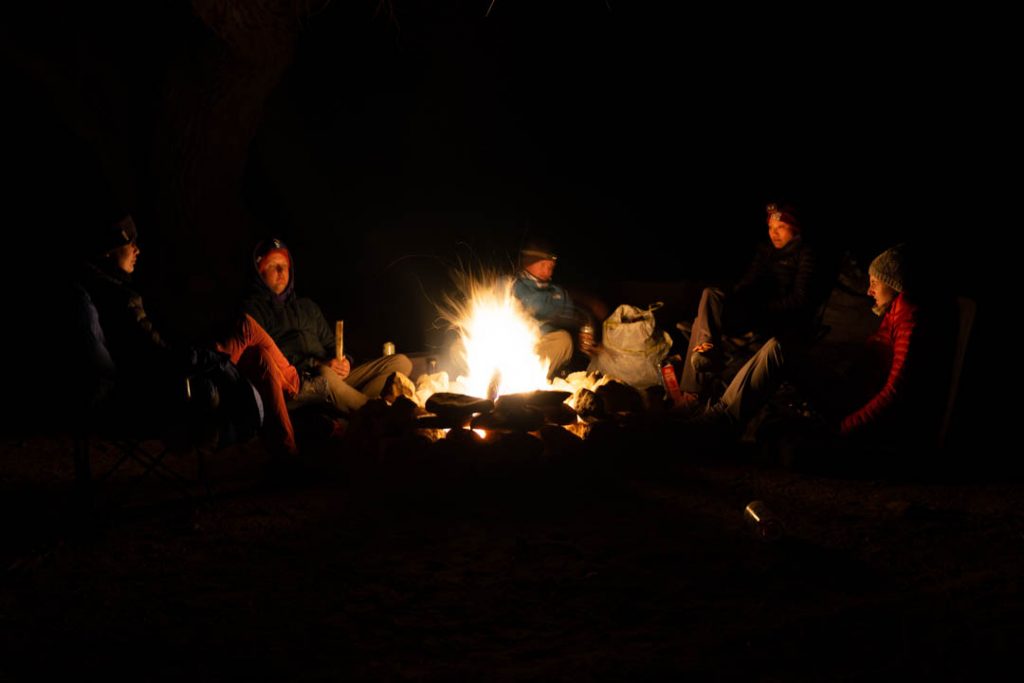Last Updated on December 20, 2023 by foxintheforest
I’ve got to be honest with you, as much as I love backpacking and going on mountain expeditions, I love myself a good car camping weekend. There’s something relaxing about hanging out by the fire with a few of your favorite people (or pets) and enjoying nature together. However, not everyone is super-stoked on sleeping outside. This guide to camping for beginners will help you make the most of your first camping trip.
How to Plan a Camping Trip
I get asked again and again how I find amazing car camping spots. After regularly planning car camping trips for my friends and loved ones, it has become second nature.
First, decide what you want to do and see. Are you interested in a desert road trip? Or maybe you want to visit a national park? Maybe you just want to check out a wilderness area and go on a few hikes. Once you’ve decided what you and your crew want to get into, you can then plan a camping trip.
The next step is to decide what kind of camping you’re looking for. Do you want to stay at a paid site with pads and amenities? Or are you looking for a dispersed camping adventure (no amenities, but much more secluded). Once you’ve decided where you want to go, what you want to do, and which kind of camping you’re looking for, it’s time to find the perfect place to pitch your tent!
Looking for destination inspiration? Check out these resources:
- Amazingly Free Camping Near Denver, CO
- How to Spend the Perfect Weekend in Moab, Utah
- Amazing Camping in Southern Wyoming
- Your guide to camping in the desert
How to Find a Campsite or Campground
As a beginner camper, finding a campsite can seem like a monumental task. Where do you start looking? A quick Google search for the area you are planning to camp may yield some fun results, but most of the time you’ll be finding overly populated private campgrounds. If you’re looking for a bit more seclusion, then you may want to consider digging a little deeper.
Start by visiting the National Forest, National Park, or BLM Land website. Usually, they will list campgrounds that are maintained by these agencies.
These campgrounds differ from private campgrounds in that they typically are a bit more rooted in nature. At private campgrounds, you will find utility hookups, concrete pads, playgrounds, even community centers.
However, campgrounds managed by the government are typically slightly more rustic, with fewer amenities. Although several government-run campgrounds may share some amenities such as toilets, showers, waste disposal and sometimes even hookups, they also have a better connection to nature.
Typically, private campgrounds are reservable in advance, while government-run campgrounds can be either reservable or available on a first-come-first-serve basis. Be sure to do your research beforehand.
An Introduction to Free Camping for Beginners
One of my favorite parts of camping is dispersed, free campsites. Also known as boondocking, dispersed camping refers to car camping on public lands without any amenities. This means you’ll need to know how to properly use the bathroom in the wilderness, pick up after yourself, pack out your trash, protect your food from unwanted critters, and bring your own water. Typically, dispersed camping is quiet and connected to nature. Sites vary in quality and are often found down dirt roads.
So how do beginner campers go about finding these hidden gems in the wilderness? Well, the answer requires a bit of thought and research. In this complete guide to finding free camping, I give you step-by-step instructions on how to find free dispersed campsites, as well as a few tips for your first time out.
How to Navigate the Wonderful World of Camping Permits
Many campsites in National Parks and other popular outdoor recreation areas require permits for camping. These permits fill up fast, especially in the west, and some even go within the first few minutes of being open. The tricky thing about permitting systems is that every national park and wilderness area does it differently. First, research where you want to go and find out if there is a permitting system. If so, read the park’s website to determine how permits are obtained. Some are done via a mail-in lottery (like the Grand Canyon) and others are reservable online a certain number of months in advance (such as Canyonlands National Park).
Keep in mind, that many national parks, including Yosemite, now require permits for popular day hikes. So even if you plan on utilizing free, dispersed (and unpermitted) camping, you still may need a permit for your chosen activity. Read up on what you want to do, and plan accordingly. If you are in a bind and can’t get the weekend you want, or you’re competing for super-popular permits, consider the following:
- Go during the week. Often times permits are readily available during the middle of the week
- Go during the shoulder season. Skirt the busy times by heading to an area just after the busy season, but before the weather is unbearable
- Go in winter. Winter camping is a bit of an adventure, but if you can stomach the cold, you can often have the entire area to yourself, just make sure it’s still open!
Get to Your Campsite Early
Many campsites operate on a first-come-first-serve basis, free-dispersed camping included. If you plan on taking a weekend away and you’re going to camp at a first-come-first-serve site, arrive as early as possible. You can always plop down your tent and hit the road to the nearest activity. Many popular areas get super busy in the summer and showing up on a Saturday night may mean you’re out of room and all the sites are taken. Some campgrounds have a check-in time or the time at which people can arrive for the following night
What to Do if the Camp Sites are Full
Soooo things didn’t quite go to plan and you showed up at your campsite only to find out it’s full. First, is there camping nearby? Always have a backup plan with an alternate area or choose a camping area with multiple sites. This is especially important with dispersed camping. If you find that a campground is full, try asking the campground manager if they know of other places to go. Some areas are more friendly than others. One time, a group of friends and I were at Shelf Road and there was no camping. This campground has quite a few climbers and we kindly asked a group if we could squeeze into the corner of their site for the night. It’s not typical, but since it was already almost 10 pm, they didn’t mind.
Camping 101: Pooping in the Woods
Okay so, this is a big one. How do you go to the bathroom on a camping trip? Well, first, if you are squeamish about packing out your own toilet paper, or in some instances poop, then I would recommend staying at a campsite that offers toilets. Don’t worry, you can work your way up to pooping outside. In my humble opinion, pooping outdoors is much less stinky and gross than 99 percent of the toilets you’ll find at campsites.
For number one, simply step 70 adult steps away from camp and let it rip. Ladies, you have a few options. One, use TP, but remember, you’ll have to pack it out in your trash. You can make a TP baggie by covering a plastic baggie with duct tape and then sprinkling a little baking soda in the bag (helps with the smell). Or you can use a pee rag, which is a rag you use to wipe (number one only!) and then let it dry in the sun by attaching it to your pack. The third option is to use a female urination device or pee funnel. This is my preferred method. Female urination devices take a little bit of practice, but they are super-handy once you have it nailed down.
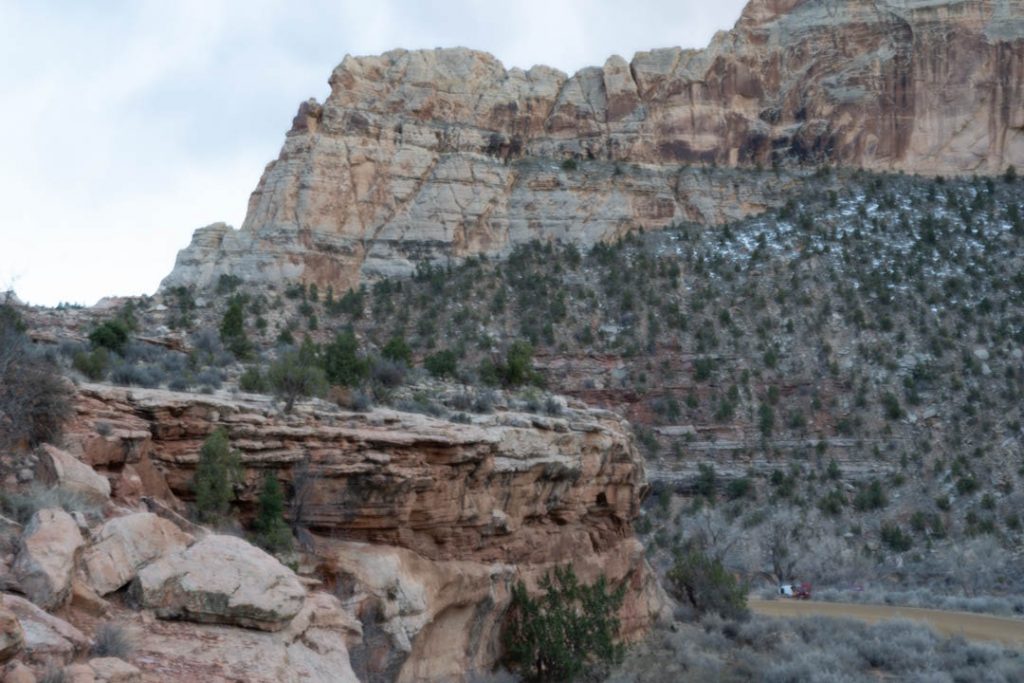
What about poo? Well, first take those 70 adult steps away from camp. Make sure you are also 70 adult steps away from water sources or a trail. Larger animals (like bears) like to eat human poo (yummy). Going number two near a water source such as a lake or stream can contaminate an otherwise sensitive environment, not to mention, it can leach into your fresh water source if you’re filtering water.
Next, use a backpacking shovel (or small e-tool) to dig a hole that is around six inches deep (only four inches deep in the desert, since it takes more time to break down). The hole should be wide and long enough to accommodate your dookie. Squat over the hole and go. Lastly, bury your business with the dirt you used for the hole. If you’re shy, use a rock or a fallen tree for some shelter or privacy. Be sure to pack out your TP after you’ve done your business.
Why can’t you bury your toilet paper? Simply put, animals like to dig it up and eat it. Toilet paper doesn’t decompose all that quickly and it is unsightly once it’s been dug up. So please, pack it out. Use hand sanitizer after you use the bathroom to clean yourself up. Keep in mind some wilderness areas require you to use a poop bag and actually pack out your poop.
Preparing for Your First Camping Trip
Before you head out on your first camping trip, be sure to make a list and check it twice. Write down all the gear you’ll need and all of the food you’ll need to pack (psst, if you’re going to the desert – check out this desert packing list). Make a note on where you plan to camp and be sure to tell someone at home where you’ll be. If you have young kids or a pet, consider setting up the tent at the house and allowing your family to play around. Most tents these days are simple to set up, but it always helps to know your gear (there’s nothing worse than getting to camp on a rainy, windy day and having to read directions!). You don’t need to go overboard, but understand what you’ll need, where you are going, and how to use your gear.
Hygiene Tips for Beginner Campers
Staying clean when there’s no shower takes a little practice. However, it’s pretty easy to keep relatively tidy and cozy while you car camp. Here’s a look at a few quick camping hygiene tips for beginners:
- Wash/sanitize your hands and do it often. Dirt and grime can quickly build up and contaminate food or bring illness. Always wash or sanitize your hands after using the bathroom, before and after eating, and whenever they get dirty.
- Don’t put your hands in communal food. Instead, pour food into your hands, so you keep the big bag-o-trail mix clean. Same goes with kids and sharing with friends.
- Use the stove to heat up some hot water and give yourself a sponge bath. On longer journeys or dusty days, I’ll wipe down the face, pits, and crotch (in that order) with some hot water or a wipe. It helps!
- Itchy hair is common, especially with longer hair. Use baby powder or dry shampoo if you need it.
- Never bathe in a stream or lake, even with eco-friendly soap. The soap contaminates the water and can kill wildlife. Period. If you do wash your hair, bury your soapy water like you would for your poop.
- Always brush your teeth twice daily. Keep as close to normal hygiene as possible.
It’s Okay Not to Fall in Love the First Time You Go Camping
One of the biggest things to understand about camping is that it isn’t always the glorious, Instagram-worthy activity you think it is. It’s work. Sometimes, work sucks. Expect not to like everything about camping, but do try and find something you do enjoy, even if you discover you never want to camp again. You’re in nature, it’s beautiful. Enjoy it!
Always Be Helpful
If you’re tagging along with a bunch of seasoned campers, always lend a helping hand. Offer to clean dishes, gather firewood, clean up after the group, help pack, anything to be helpful. If others are up running around and you’re sitting on your laurels, ask if someone needs help, even if it’s just making a pot of coffee for the group.
Sleeping in a Tent
Spending your first night in a tent as a beginner camper can be a slightly unnerving experience. Tent camping is also very freeing. On windy nights, expect a lot of flapping around. When it’s dead quiet, you’ll hear every creek in the woods. I always camp with earplugs so I can tune out any sounds and simply saw some logs.
Sleeping bags and sleeping pads have come a long way, but they are still a far cry from your bed at home. Plan on being somewhat uncomfortable. You can wad up clothes to create leg pillows and arm pillows, cinch down your head baffle to get warm or let it all hang out to cool off. Sometimes I’ll bring my pillow from home when I go tent camping. The little luxuries can go a long way.
Speaking of luxury, check out these car camping accessories that I simply can’t leave home without.
Fire Safety for Newbie Campers
Every year people flock to the outdoors to go camping, and every year there are wildfires caused by people. It’s a fact of life when it comes to car camping, but there are several ways you can mitigate the risk of a fire. First and foremost, only have fires in pre-established fire rings. If there isn’t a ring, then you probably shouldn’t be camping there. The second rule and this is a big one, respect any and all regulations relating to fire bans. They are in place for a reason. Yes, camping without a campfire can be a bit bland, but the ban exists because conditions are prime for wildfires. If you don’t know, call the nearest ranger station and ask.
When it comes to gathering firewood, only use wood you can gather with your hands and feet. Remember, it’s never okay to cut down live trees. Ever. Not to mention, the wood will be saturated with water and just cause a smokey mess. Look for dead branches (they should be easy to snap), small fallen trees, and other dead, dry wood. If it’s bendy, it’s alive, even if it appears to be dead (this is especially tricky in the desert, where certain plants only bloom with flooding).
Lastly, keep your fire safe. Don’t build up a bonfire that can get out of control. Be sure to keep a shovel or water handy if things get out of control or you go to bed before the fire has died. Keep in mind that embers can produce a flame (especially in the wind) for hours after the initial flame has died down, so bury ashes (pro tip: Unbury them in the morning for a quick startup). Other hand tips for having a fire while camping include:
- Avoiding the wind. If it’s super windy, consider having an early night, since embers can easily fly through the forest and start a wildfire.
- Don’t have a fire underneath a tree. This seems obvious, but trust me, I’ve seen it all.
- Build a wall around the windward side of your fire ring. If you’re using rocks, don’t be shy about building up the fire ring on one side if there is a slight breeze (not super windy).
- Always put your fire out when you leave camp or call it a night.
- Learn how to properly start a campfire. It will save you hours of frustration.
Camping Food and Water
Maybe you’ve searched for camping food meal ideas and found a wealth of incredible spreads across Pinterest and think, “Wow, wouldn’t it be amazing to have a gourmet, three-course meal when we camp?” I have news for you, camping meals take about three times more effort than meals at home. Oh, and you don’t have an oven. Sure, camping over the fire is great (it’s also nice when you have a grate) but it takes FOREVER to cook food that way.
My recommendation for camping food? Keep it simple. Think pasta and sauce, loaded instant mashed potatoes, pre-made boil-in-a-bag food and ramen kind of easy. Meal prep is also a great idea. Keep in mind that anything fatty, greasy or cheesy should be left for the last night (it’s a nightmare to clean greasy pots and pans outside). I try to keep meals to one pot or one pan. One of us eats straight from the pot and the other uses a plate or bowl. Dishes are done in a snap!
After you eat, be sure to wash your dishes using some hot water (you may or may not need soap). With a little water and a dish brush or your finger, you can rub away any mess. Then dump the water 70 steps from camp, with that good old six-inch hole you learned to dig. Same goes for draining pasta water. Critters will find food, so try and eat any food scraps or throw them in your garbage bag.
Don’t Be THAT Camper
Listen, I know that this post is geared towards camping for beginners, and you may not know you’re being annoying. However, I’ve spent so many nights outside and there are a few things you need to keep in mind for your fellow campers. As a common courtesy, respect your neighbors. Here are a few things you DON’T want to do on your first camping trip.
- Be up super late, playing music or talking loudly. Unless you’re the only people for miles, respect quiet hours and keep noise to a minimum after 10 pm.
- Romp your vehicle across an untouched landscape. I’ve seen some people do some stupid stuff. Never camp or drive your vehicle on the undeveloped landscape.
- Shoot your guns at ungodly hours. So my family has guns. I’m not the biggest fans of guns, but I am a gun owner. I understand it’s tough to find a place to shoot, but keep that ruckas to daylight hours only please.
- Run, bike, hike, romp through other people’s camp sites. It’s rude and invasive. Don’t let your kids do it either, it isn’t “cute.”
- Cut live trees. Or use a chainsaw. Burning live trees will yeild a smokey mess, not to mention it’s illegal in most places.
- Leaving your fire unattended. This is how tragic wildfires start. Put. It. Out. Use water, bury it in the dirt, but don’t leave camp with a fire still burning or embers glinting.
- Leave a ton of trash. I once rolled up to a campsite that had a mess of blankets, pillows, beer bottles (don’t bring glass), and all sorts of nasty things. Do a sweep through camp and pick up all of your trash as well as trash you find that isn’t yours.
Check out this post for more about Leave No Trace and how to be a better steward to the environment.
Protecting Your Food from Wildlife
It doesn’t matter where you are tent camping, you’ll always have to deal with wildlife. Sure, you may not be in bear territory, but foxes and raccoons are just as destructive. Keep all perishable food stored away in a cooler. If you are camped in bear territory, utilize any bear containers your campsite may have (if you don’t have any, your car is the next best thing). After mealtime, put away all food in your vehicle. This includes dirty dishes, trash, toothpaste, deodorant, flavored lip balm, and your stove or grill. We once crept up on a campsite and saw a bear sniffing a portable grill on the tailgate of a truck while the campers slept on a tent mounted to the roof (spooky). This also goes for dog food.
Car Camping with Your Dog
Bringing Fido out on a camping adventure is a LOT of fun. Nina has been camping with me ever since I got her and she loves to roll around in the dirt. When it comes to camping with your dog, pick up their waste just as you would your own (you can bury dog waste to save bags). Be sure to protect your dog’s food too, just like yours.
In terms of extra items to pack for your dog, you don’t really need much. A blanket and some protection from the cold ground are always helpful. We love using our Therm-a-Rest Z-Lite for Nina’s sleeping pad. A Rumpl blanket not only makes a campfire cozier, but it also helps create a little nest and blanket for the dog at night.
Also, if you’re camped at a campground, be sure to keep your dog on a leash. Pets tend to wander with all the excitement of camp, so consider leashing them up, or tying up a tyroll (a line between two trees and the leash hangs down on a carabiner so your pup has space to roam.
Lastly, bring some comforts for your pet. You’re car camping, you can afford a toy or two, maybe even a small bed, and some extra snacks! Don’t forget that dogs often drink more when they are outdoors in the heat, so bring plenty of water and make sure the dish is always full (we love our Ruffwear Portable Dog Bowl).
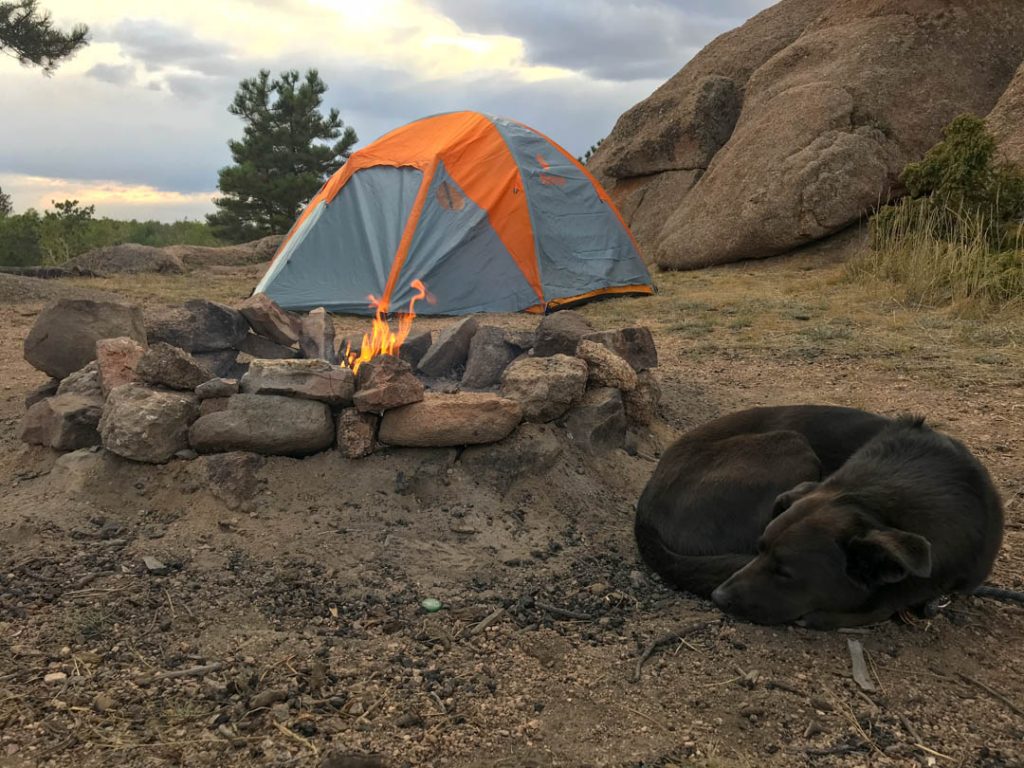
Car and Tent Camping Checklist
Now that you’re ready to camp, let’s get down and dirty with your tent camping checklist. These are must-bring items for any camping adventure. I’ve made a few car camping gear suggestions that I simply can’t leave home without.
- Tent. You don’t need anything fancy. A $30 tent from Target is just fine for the beginner car camper. You can also rent tents from outdoor gear stores.
- Tent footprint – important for protecting your tent from the ground, and keeping you dry.
- sleeping bag
- pillow
- sleeping pad
- Cooler
- Camping Chair
- Water
- Water Jug
- Meals
- Extra Snacks
- Hiking Bag. The REI Flash 18 or Flash 22 is an excellent, low-cost option for a hiking pack that can easily be packed down.
- Hiking Clothes (for more on outdoor clothing, read my guide to women’s hiking clothes)
- A pair of camp socks. Treat your feet to a warm, fuzzy, clean pair of socks after a day of adventure
- Camp shoes. Keep the toes closed so you don’t stub your toe on anything.
- A puffy jacket. Even in summer, it gets cold.
- Sun protection (sunglasses, sunscreen, sun hat)
- Rain/wind layers
- Lighter
- Axe for chopping firewood
- Cookset. I can’t get enough of our GSI Bugaboo Cookset.
- Knife for cutting food
- Pocket Knife
- Headlamp
- Extra Batteries
- Lantern (optional but handy)
- Bug Spray
- A game (optional but always fun, we love Bocci ball!)
- Trash bags
- Towel (for messy pups and kids). A regular towel works fine, but PackTowels offer a handy quick-dry option
- Dish Towel
- Small washbasin (optional, but handy)
- Eating utensils. I’m obsessed with the Go Bite Uno Sporks. If it was acceptable to use them everyday, I would.
- Cooking utensils
- A good book
- hand sanitizer
- Bathroom kit (backpakcing shovel, toilet paper, toilet paper waste baggie, wipes, hand sanitizer – literally so important I put it on there twice)
- Basic toiletries
- Any medications
- First Aid Kit
Phew, you finally made it! Now you’re armed and ready with the expert knowledge you need to get outside and go on your first camping adventure with this camping 101 guide. Get out and camp with confidence, oh and be sure to show me all the awesome photos! Happy camping.
